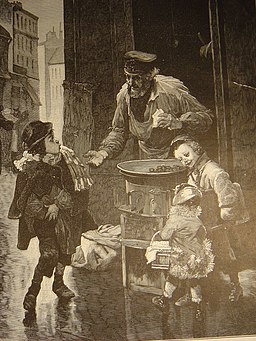I first tried chestnuts when I was a student in Paris. The holiday season was peaceful that year, and the streets were crowded and cheerful. It was thrilling to get caught up in the sudden early darkness of winter and the elaborate holiday windows of the grand old department stores. During one evening promenade, I saw a street merchant who had anchored himself in the middle of the streaming agitated crowd and was patiently tending a pan of marrons grillés, freshly roasted chestnuts. The scene was so sepia toned, so achingly 19th century, that I had to have some, just to glut my sentimentality. I bought a newspaper cone of the hot aromatic nuts and managed to peel one with my cold fingers right there on the sidewalk.

The sweet chestnut of Europe is a true chestnut (Castanea sativa), not the beautiful but toxic horse chestnut (Aesculus hippocastanum), which so famously covers Paris with its pink-eyed blossoms in April. I have happily returned to Paris many times in the summer and fallen in love with its horse chestnut trees. In that frozen moment in December, however, the spell of Christmastime in the City of Lights was broken for me when I realized that I could definitely live without the true Castanea chestnuts.

A couple of years ago I found fresh local chestnuts at my neighborhood farmers market, and I decided to give them another try in my own kitchen. To read what I learned about their morphology, how their enclosing cupule evolved, and how to prepare them yourself, read the full story at https://botanistinthekitchen.blog/2018/12/17/the-chestnut-song/

Editor’s note
For me, a chestnut song reached my home in the Dad’s Army episode ‘Asleep in the Deep‘ – ‘Underneath the spreading chestnut tree’ which you can hear in full in this 1938 recording.
The Botanist in the Kitchen blog is a great resource and I’d thoroughly recommend you look at it.
